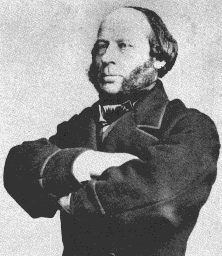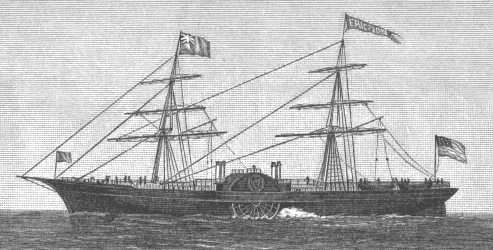
JOHN ERICSSON (1803-1889)
Caloric engines-part one

| JOHN ERICSSON (1803-1889)Caloric engines-part one |
INDEXCaloric engines Part One Part Two Bibliography Index Ericsson ephemera Photographs & engravings Cigarette & Tabacco cards Postage stamps Medals & Coins |
 Ericsson built a more successful engine which worked on a closed cycle with external heating. He demonstrated a working model in London in 1833, this he called his Caloric Engine. Ericsson rated this machine at 5 bhp. He used two double acting cylinders of 14 inches (the hot cylinder) and 10 1/4 inches in diameter (the cold cylinder). A tubular heat exchanger was used to give a form of regeneration. Although Ericsson claimed priority of invention for this form of regeneration it was in fact patented by Robert Stirling in 1816. 
This experiment was not the success Ericsson had hoped for. He confined his interest to steam until 1838 when a 24 hp experimental engine with a wire gauze regenerator was constructed. This machine was not perfected since Ericsson left England for America the following year. Ericsson settled in New York where he built, between 1840 to 1850, eight experimental engines using wire gauze regenerators. These engines worked on an open cycle with external heating and using two pistons of unequal diameters. In 1851 Ericsson persuaded his financial backers to build the Caloric Ship Ericsson. A 260 foot paddle ship powered by a four cylinder caloric engine. Each cylinder was 168 inches in diameter with a 6 foot stoke. The ship was not a success, and unfortunately for Ericsson it sank in storm off New York. On being raised the Ericsson was fitted with steam engines. These steam engines were later removed and the ship continued in service as a sailing vessel until 1898 when it was driven ashore in a storm, off the west coast of Canada. 
|